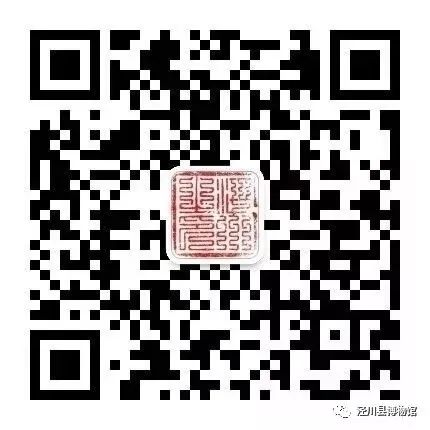
Understanding a City
Starting from the Museum……
Follow
The Five Elements (Wu Xing) is an ancient Chinese materialistic view, widely used in philosophy, Traditional Chinese Medicine (TCM), and divination. The Five Elements refer to: Metal (Jin); Wood (Mu); Water (Shui); Fire (Huo); Earth (Tu). It is believed that nature is composed of these five elements, and their rise and fall cause changes in nature, which not only affect human destiny but also lead to the continuous cycle of the universe.
The theory of the Five Elements (first appearing in Daoist philosophy) posits that all things in the universe are constituted by the movement and transformation of these five basic substances: Wood, Fire, Earth, Metal, and Water. It emphasizes a holistic concept, depicting the structural relationships and forms of movement of things. If Yin and Yang represent an ancient theory of oppositional unity, then the Five Elements can be seen as a primitive general system theory.
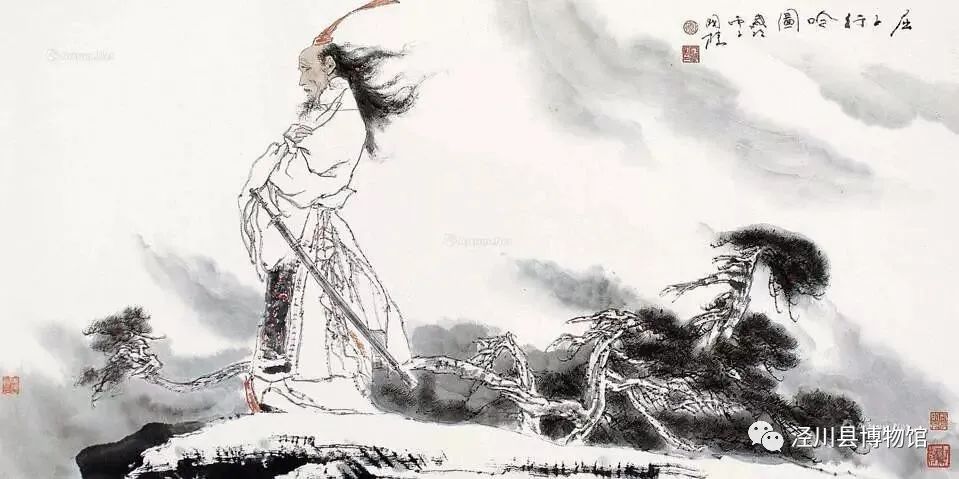
By the end of the Western Zhou Dynasty, there was already a simple materialistic viewpoint known as the “Five Materials Theory”. From the records in the Guo Yu (National Language) and Zuo Zhuan (Zuo’s Commentary), it was noted that “Earth mixes with Metal, Wood, Water, and Fire to create all things” and “Heaven produces five materials, which the people use together; one cannot be discarded”. In the Shang Shu (Book of Documents), it states: “Five Elements: First is Water, second is Fire, third is Wood, fourth is Metal, fifth is Earth. Water moistens downwards, Fire rises upwards, Wood bends and straightens, Metal transforms and reforms, Earth is for planting and harvesting.” This began to abstract the properties of the Five Elements and deduce them to other things, forming a fixed combinatorial form. During the late Warring States period, the ideas of mutual overcoming (Ke) and mutual generation (Sheng) of the Five Elements were proposed, and the order of overcoming and generating was fixed, forming a model of interrelation among things, spontaneously reflecting the internal structural relationships and the concept of wholeness. It was during this period that the Nei Jing (Inner Canon) applied the theory of the Five Elements to medicine, which played an important role in studying and organizing the vast clinical experiences accumulated by ancient people, forming a unique theoretical system of TCM.
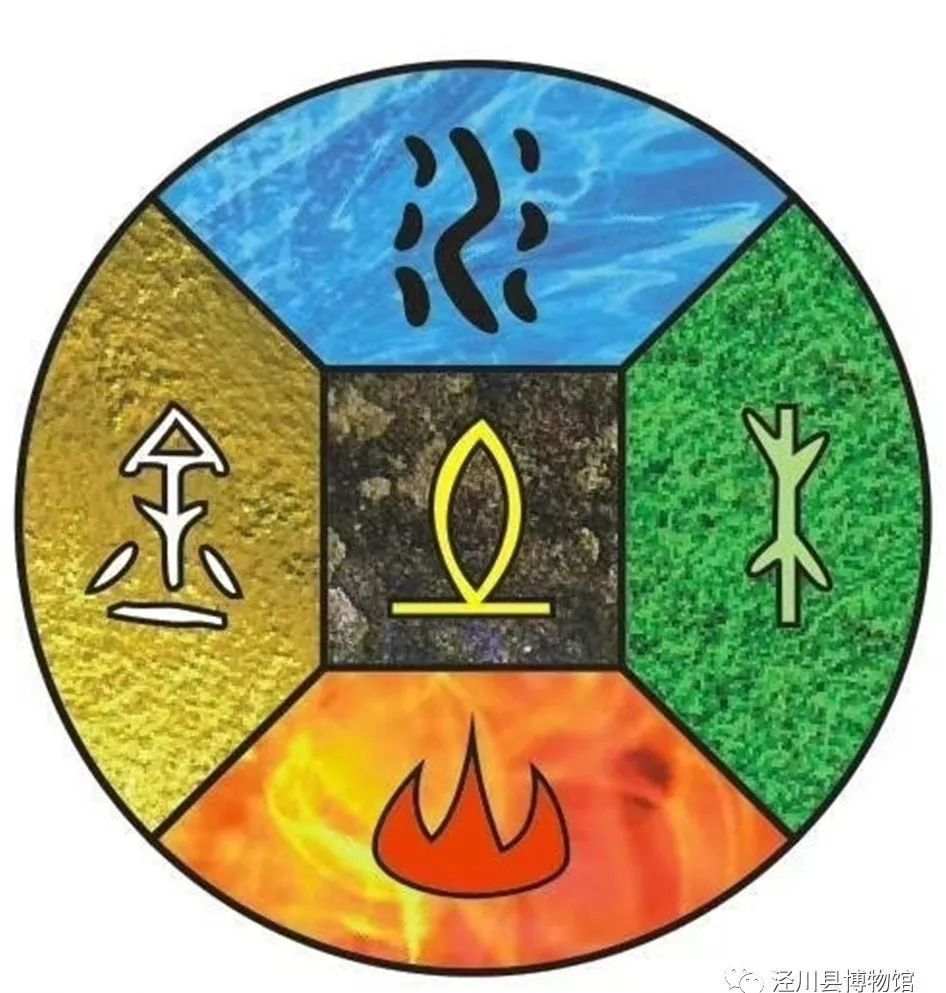
The mutual overcoming of the Five Elements: Metal overcomes Wood, Wood overcomes Earth, Earth overcomes Water, Water overcomes Fire, Fire overcomes Metal. The mutual generation of the Five Elements: Metal generates Water, Water generates Wood, Wood generates Fire, Fire generates Earth, Earth generates Metal. The numerical values of the Five Elements: Metal is seven, Wood is eight, Water is six, Fire is nine, Earth is five. Ancient laborers, through long-term contact and observation, recognized that each element has different properties. “Wood bends and straightens” means that Wood has the property of growth and upward movement; “Fire rises” indicates that Fire has the property of heat and upward movement; “Earth is for planting” refers to Earth’s ability to cultivate crops and give life to all things; “Metal transforms” means that Metal has the property of cleansing and reforming; “Water moistens downwards” indicates that Water has the property of nourishing and moving downwards. Based on this understanding, ancient people categorized various things in the universe according to the Five Elements, thus conceptually, they were no longer just Wood, Fire, Earth, Metal, and Water themselves, but a large category of various things and phenomena that share comparable abstract properties.
The categories of Five Elements thought in the history of Chinese philosophy: “Until now, we have basically analyzed the various meanings of the Five Elements. For clarity, we will summarize these meanings as follows:
(1) Refers to five behavioral principles, possibly held by Xunzi. (2) Refers to five material properties, as held in the Shang Shu and Taiji Tu by Zhouzi. (3) Refers to five necessary material conditions for human life, as held in Zuo Zhuan by Cai Mo. (4) Refers to five classification principles in taxonomy, as held in Lüshi Chunqiu. (5) Refers to five “forms of existence” that exist due to the flow of Yin and Yang, as held in Bai Hu Tong and Huangdi Neijing Suwen. (6) Refers to Wood (plants), Fire (flames), Earth (soil), Metal (metals), and Water (flowing water). Their symbolic meanings are respectively vitality, activity or change, nurturing or cultivation, restriction and concealment. This is held by Xiao Ji. The above six meanings of the Five Elements, except for (1) and (3), if the remaining (2), (4), (5), and (6) are combined, represent the complete meaning of the Five Elements in the Yin-Yang theory.
*Five Elements: Metal, Water, Wood, Fire, Earth.* *Directions: East, West, South, North, Center.* *Mutual generation of the Five Elements: Metal generates Water, Water generates Wood, Wood generates Fire, Fire generates Earth, Earth generates Metal.* *Mutual overcoming of the Five Elements: Metal overcomes Wood, Wood overcomes Earth, Earth overcomes Water, Water overcomes Fire, Fire overcomes Metal.* *Mutual stealing of the Five Elements: Metal steals Earth, Earth steals Fire, Fire steals Wood, Wood steals Water, Water steals Metal.* *Mutual drowning of the Five Elements: Metal steams Water, Water drowns Wood, Wood drowns Fire, Fire dries Earth, Earth covers Metal.*
The relationship between the Heavenly Stems and the Five Elements, and directions: Jia is the wood of the beam, in the East.
Yi is the wood of flowers and fruits, in the East. Bing is the fire of the sun, in the South.
Ding is the fire of lamps and candles, in the South. Wu is the earth of city walls, in the Center.
Ji is the earth of fields, in the Center. Geng is the metal of axes and knives, in the West.
Xin is the metal of jewelry, in the West. Ren is the water of rivers and lakes, in the North.
Gui is the water of rain and dew, in the North. The Eight Trigrams corresponding to the Five Elements: Metal – Qian, Dui; Qian is Heaven, Dui is Marsh; Wood – Zhen, Xun; Zhen is Thunder, Xun is Wind; Earth – Kun, Gen; Kun is Earth, Gen is Mountain; Water – Kan; Kan is Water; Fire – Li; Li is Fire.* The Earthly Branches clash (agitate): Zi (Rat) clashes with Wu (Horse), Chou (Ox) clashes with Wei (Goat), Yin (Tiger) clashes with Shen (Monkey), Mao (Rabbit) clashes with You (Rooster), Chen (Dragon) clashes with Xu (Dog), Si (Snake) clashes with Hai (Pig). * The Earthly Branches harm (pierce): Zi (Rat) harms Wei (Goat), Chou (Ox) harms Wu (Horse), Yin (Tiger) harms Si (Snake), Mao (Rabbit) harms Chen (Dragon), Shen (Monkey) harms Hai (Pig), You (Rooster) harms Xu (Dog). * The Earthly Branches punish (hinder): Zi (Rat) punishes Mao (Rabbit), Chou (Ox) punishes Xu (Dog), Yin (Tiger) punishes Si (Snake), Chen (Dragon) punishes Chen (Dragon), Si (Snake) punishes Shen (Monkey), Wu (Horse) punishes Wu (Horse), Wei (Goat) punishes Chou (Ox), Shen (Monkey) punishes Yin (Tiger), You (Rooster) punishes You (Rooster), Xu (Dog) punishes Wei (Goat), Hai (Pig) punishes Hai (Pig). * The Earthly Branches combine (harmonize): The three combinations of Earthly Branches: Zi (Rat), Chen (Dragon), Shen (Monkey) combine into the Water group; Si (Snake), You (Rooster), Chou (Ox) combine into the Metal group; Yin (Tiger), Wu (Horse), Xu (Dog) combine into the Fire group; Hai (Pig), Mao (Rabbit), Wei (Goat) combine into the Wood group; the Earthly Branches combine harmoniously: Zi (Rat) and Chou (Ox) combine to transform into Earth, Yin (Tiger) and Hai (Pig) combine to transform into Water, Mao (Rabbit) and Xu (Dog) combine to transform into Fire, Chen (Dragon) and You (Rooster) combine to transform into Metal, Si (Snake) and Shen (Monkey) combine to transform into Water, Wu (Horse) and Wei (Goat) combine to transform into the Sun and Moon.
1. Characteristics of Metal Metal represents the principle of change, and is described as “transforming”. It implies the ability to be flexible and rigid, to extend, to change, and to cleanse. Metal: Its nature is strong and fierce; in the Four Pillars, those with strong Metal have a square face and clear bones, are healthy and spirited, are righteous, decisive, fearless of violence, generous, and have a strong sense of self-awareness and integrity. In the Four Pillars, excessive Metal is a taboo, leading to rashness, bravery without strategy, aggressiveness, greed, and lack of righteousness; while insufficient Metal leads to indecisiveness, indulgence, and cruelty.2. Characteristics of Wood Wood represents benevolence: Wood is described as “bending and straightening”; bending means to yield, and straightening means to extend, thus Wood has the ability to bend and stretch, and can absorb the energy of water and earth, allowing it to grow and develop, hence Wood also has the gentle and benevolent nature of growth and upward movement. Wood: Its nature is straight and harmonious; in the Four Pillars, those with strong Wood are kind, gentle, broad-minded, compassionate, eager to help, generous, tall, graceful, with thick and shiny hair, lively, positive, and ambitious. In the Four Pillars, excessive Wood is a taboo, leading to stubbornness and extremism; while insufficient Wood leads to weakness, jealousy, ingratitude, and coldness.3. Characteristics of Water Water represents wisdom: Water is described as “moistening downwards”; moistening means to hydrate, and downwards means to flow down, thus Water has the properties of nourishing and delving into concealment. Water: Its nature is intelligent and kind; in the Four Pillars, those with strong Water have a spirited appearance, are quick-witted, resourceful, and articulate. In the Four Pillars, excessive Water is a taboo, leading to greed, lust, cunning, and aggressive speech, easily causing trouble; while insufficient Water leads to short stature, dark complexion, fickleness, cowardice, and narrow-mindedness.4. Characteristics of Fire Fire represents propriety: Fire is described as “rising heat”; rising means to ascend. Thus, Fire has the properties of warmth and upward movement, and can drive away cold and maintain warmth, as well as forge metals. Fire: Its nature is urgent and respectful; in the Four Pillars, those with strong Fire are spirited, proactive, humble, pay attention to appearance, are enthusiastic and generous, and friendly. In the Four Pillars, excessive Fire is a taboo, leading to a flushed face and loud voice, impulsiveness, competitiveness, and easily causing trouble; while insufficient Fire leads to a thin and pointed forehead, spreading rumors, cunning jealousy, and lack of follow-through.5. Characteristics of Earth Earth represents trust: Earth is described as “planting and harvesting”; planting refers to sowing, and harvesting refers to reaping. Earth has the ability to bear and nurture, thus it is the mother of all things, possessing a heavy and generous nature. Earth: Its nature is heavy and profound; in the Four Pillars, those with strong Earth have a round waist and moist nose, clear eyebrows and eyes, and a strong voice; they are loyal, filial, sincere, broad-minded, and act on their words. In the Four Pillars, excessive Earth is a taboo, leading to introversion, stubbornness, and lack of understanding; while insufficient Earth leads to a flat nose, dull expression, untrustworthiness, and stinginess.
Characteristics of Metal: The ancients referred to Metal as “transforming”. “Transforming” refers to the meaning of “change”. It extends to things that have cleansing, suppressing, and gathering effects, all of which belong to Metal.
Characteristics of Wood: The ancients referred to Wood as “bending and straightening”. “Bending and straightening” actually refers to the growth form of trees, where branches and trunks bend and straighten, extending outward. Thus, it extends to things that have growth, upward movement, and smoothness, all of which belong to Wood. Characteristics of Water: The ancients referred to Water as “moistening downwards”. This means that Water has the properties of nourishing and flowing down. It extends to things that are cold, moist, and flow downwards, all of which belong to Water.
Characteristics of Fire: The ancients referred to Fire as “rising heat”. “Rising heat” means that Fire has the properties of warmth and ascension. Thus, it extends to things that have warmth and rising effects, all of which belong to Fire. Characteristics of Earth: The ancients referred to Earth as “planting and harvesting”. This means that Earth has the role of planting and harvesting crops. Thus, it extends to things that have nurturing, bearing, and receiving effects, all of which belong to Earth. Hence, there is the saying that “Earth bears all things” and “Earth is the mother of all things”.
Classification of the Five Element properties of things. ① Classification method: The properties of things in the Five Elements are derived by comparing the nature of things with the characteristics of the Five Elements. For example, if a thing resembles the characteristics of Wood, it belongs to Wood; if it resembles the characteristics of Fire, it belongs to Fire, etc. For instance: the Five Organs correspond to the Five Elements, as the Liver governs upward movement and belongs to Wood; the Heart Yang governs warmth and belongs to Fire; the Spleen governs transformation and belongs to Earth; the Lungs govern downward movement and belong to Metal; the Kidneys govern Water and belong to Water. In terms of direction, the East corresponds to the rising of the sun, which resembles the upward movement of Wood, thus it belongs to Wood; the South is hot, resembling the rising nature of Fire, thus it belongs to Fire; the West is where the sun sets, resembling the suppressing nature of Metal, thus it belongs to Metal; the North is cold, resembling the nature of Water, thus it belongs to Water. ② Deduction method: For example, the Liver belongs to Wood, thus the Liver governs tendons and opens to the eyes, so “tendons” and “eyes” also belong to Wood; the Heart belongs to Fire, thus “pulse” and “tongue” also belong to Fire; the Spleen belongs to Earth, thus “flesh” and “mouth” also belong to Earth; the Lungs belong to Metal, thus “skin and hair” and “nose” also belong to Metal; the Kidneys belong to Water, thus “bones” and “ears” and “two Yin” also belong to Water. ③ The Five Elements theory also posits that things belonging to the same Five Element property are interrelated. For example, the East direction, the wind in nature, Wood, and the sour taste are all related to the Liver. Below is a simplified table of the Five Element properties of nature and the human body. For the human body, it categorizes various tissues and functions into five physiological systems centered around the Five Organs.
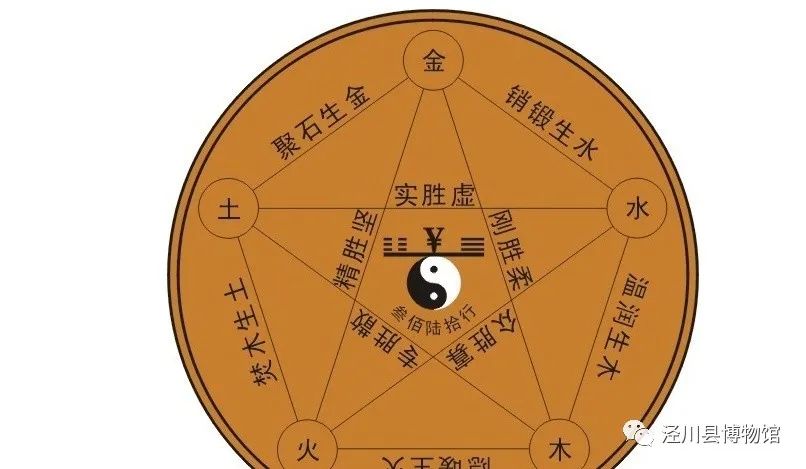
The Generation and Overcoming of the Five Elements (1) Mutual generation and mutual overcoming. Mutual generation refers to one thing promoting, assisting, and nurturing another; mutual overcoming refers to one thing suppressing and restricting the growth and function of another. Mutual generation and mutual overcoming are considered normal phenomena in the Five Elements theory; physiologically, they also represent normal physiological phenomena. It is precisely because there exists a relationship of mutual generation and mutual overcoming between things that the natural world maintains ecological balance, and the human body maintains physiological balance, hence the saying “Control leads to transformation”. The order of mutual generation of the Five Elements is: Wood generates Fire, Fire generates Earth, Earth generates Metal, Metal generates Water, Water generates Wood. The order of mutual overcoming of the Five Elements is: Wood overcomes Earth, Earth overcomes Water, Water overcomes Fire, Fire overcomes Metal, Metal overcomes Wood. Due to the existence of mutual generation and mutual overcoming relationships among the Five Elements, from any “one element” in the Five Elements, there exist four aspects of “generating me”, “I generate”, “overcoming me”, and “I overcome”. “Generating me” and “I generate” are metaphorically referred to as the relationship between “mother” and “child” in the Nanjing (Classic of Difficult Issues). The “generating me” is the “mother”, and “I generate” is the “child”; thus, the mutual generation relationship in the Five Elements can also be called the “mother-child” relationship. For example, in the case of Fire, since Wood generates Fire, the “generating me” is Wood; since Fire generates Earth, the “I generate” is Earth. Thus, Wood is the “mother” of Fire, and Earth is the “child” of Fire; that is, Wood and Fire are “mother and child”, and Fire and Earth are also “mother and child”. “Overcoming me” and “I overcome” are referred to in the Nei Jing as “what cannot be overcome” and “what overcomes”. That is, the “overcoming me” is “what cannot be overcome”, and “I overcome” is “what overcomes”. Again, in the case of Fire, since Fire overcomes Metal, the “I overcome” is Metal; since Metal overcomes Fire, the “overcoming me” is Water. Mutual generation and mutual overcoming are inseparable aspects. Without generation, there can be no occurrence and growth of things; without overcoming, there can be no maintenance of normal changes and developments in their coordinated relationships. Only by sequentially generating and sequentially overcoming, like an endless loop, can transformation continue and maintain the dynamic balance between things. (2) Mutual multiplication and mutual insult. The mutual multiplication and mutual insult of the Five Elements refer to abnormal overcoming phenomena that occur when the normal generation and overcoming relationships among the Five Elements are disrupted. Mutual multiplication: Multiplication means to overpower the weak. The mutual multiplication in the Five Elements refers to when one “element” excessively suppresses the “element” that it overcomes, leading to a series of excessive suppression reactions. In the Five Elements, there is also “mutual multiplication” and “mutual insult”; multiplication is to take advantage of the weakness, and insult is to bully. Mutual multiplication is excessive suppression, while mutual insult (counter-suppression) is when one element can counter-suppress its own element. When one “element” in the Five Elements is excessively strong, it can cause the “element” being overcome to be excessively suppressed, leading to its weakness, thus causing abnormal generation and overcoming among the Five Elements. For example, if Wood is excessively strong, it will excessively overcome Earth, leading to a deficiency of Earth, which is called “Wood overcomes Earth”. On the other hand, if one “element” in the Five Elements is weak, the suppression of the “element” that overcomes it will appear relatively stronger, making it even weaker. For example, if Wood is not excessively strong, its power to suppress Earth remains within normal limits. However, if Earth is itself deficient, it will enhance the power of Wood to overcome Earth, leading to further deficiency of Earth, which is called “Earth deficiency, Wood overcomes”. Mutual insult: Insult here refers to “counter-insult”. The mutual insult in the Five Elements refers to when one “element” is excessively strong, countering the original “element” that overcomes it, leading to a counter-insult. Thus, mutual insult is also called counter-suppression. For example, if Wood is originally overcome by Metal, but when Wood is particularly strong, it not only does not succumb to Metal’s suppression but instead counter-insults Metal (i.e., counter-suppresses), which is called “Wood insults Metal”. Conversely, if Metal is particularly weak, it cannot suppress Wood and instead is counter-insulted by Wood, which is called “Metal deficiency, Wood insults”. Mutual multiplication and mutual insult are both abnormal overcoming phenomena; the two are distinct yet related. The main difference between mutual multiplication and mutual insult is that the former occurs when excessive suppression happens according to the order of overcoming in the Five Elements, leading to abnormal relationships; the latter occurs when the suppression happens in the opposite direction of the order of overcoming, leading to abnormal relationships. The connection between the two is that when mutual multiplication occurs, mutual insult can also occur simultaneously; when mutual insult occurs, mutual multiplication can also occur simultaneously. For example, when Wood is excessively strong, it can both overcome Earth and insult Metal; when Metal is weak, it can be counter-insulted by Wood and also be overpowered by Fire.
Application of the Five Elements Theory in TCM It explains the physiological functions and interrelationships of the organs: ① It explains the physiological activity characteristics of the Five Organs, such as the Liver enjoys smoothness and has the function of dispersing; Wood has the characteristic of growth, thus the Liver belongs to “Wood”; the Heart Yang has the warming effect, and Fire has the characteristic of Yang heat, thus the Heart belongs to “Fire”; the Spleen is the source of transformation, and Earth has the characteristic of nurturing all things, thus the Spleen belongs to “Earth”; the Lungs govern the downward movement, and Metal has the characteristic of cleansing and gathering, thus the Lungs belong to “Metal”; the Kidneys govern Water and store essence, and Water has the characteristic of moistening down, thus the Kidneys belong to “Water”. ② It explains the internal connections of physiological functions among the organs. For example, the essence of the Kidneys (Water) nourishes the Liver, the Liver (Wood) stores blood to assist the Heart, the heat of the Heart (Fire) warms the Spleen, the Spleen (Earth) transforms food essence to nourish the Lungs, and the Lungs (Metal) cleanse and descend to assist the Kidneys. This illustrates the mutual nurturing relationship among the Five Organs. The clear and descending Qi of the Lungs (Metal) can suppress the excessive Yang of the Liver; the smoothness of the Liver (Wood) can disperse the stagnation of the Spleen (Earth); the transformation of the Spleen (Earth) can prevent the flooding of Kidney (Water); the nourishment of the Kidneys (Water) can prevent the excessive heat of the Heart (Fire); the Yang heat of the Heart (Fire) can regulate the excessive cleansing of the Lungs (Metal), which illustrates the mutual restriction relationship among the Five Organs. ③ It explains the relationship between the human body and the external environment, including the four seasons, five Qi, and five tastes of food. In summary, the application of the Five Elements theory in physiology lies in explaining the unity of the interconnections between the organs of the human body and the external environment.
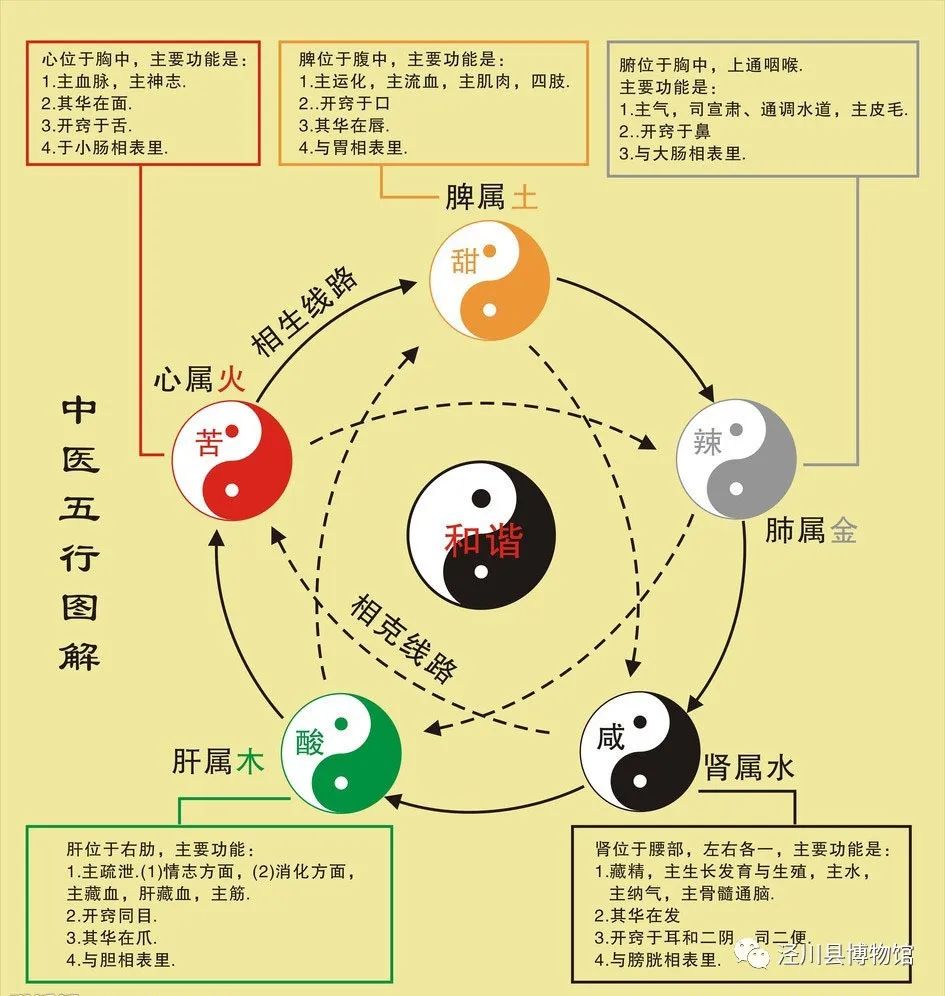
It explains the pathological influences among the organs: For example, liver disease can affect the Spleen, which is Wood overcoming Earth; Spleen disease can also affect the Liver, which is Earth insulting Wood; when both the Liver and Spleen are diseased, they influence each other, which is Wood stagnation and Earth deficiency or Earth obstruction and Wood stagnation; liver disease can also affect the Heart, as the mother disease and child; it can affect the Lungs, as Wood insulting Metal; it can affect the Kidneys, as the child disease and mother. This applies to liver disease, and the same applies to the pathological changes of other organs, all of which can be explained using the relationships of mutual generation, overcoming, multiplication, and insult among the Five Elements. (1) Application in disease diagnosis:
Diagnosing organ diseases based on the color, taste, and pulse associated with the organ. For example, if the face appears green, prefers sour taste, and the pulse is wiry, it can be diagnosed as liver disease; if the face appears red, prefers bitter taste, and the pulse is surging, it can be diagnosed as excessive Heart fire. In patients with Spleen deficiency, if the face appears green, it indicates Wood overcoming Earth; in patients with heart disease, if the face appears black, it indicates Water overcoming Fire, etc. Diagnosing the transmission of diseases among the Five Organs based on the color, taste, and pulse associated with the organ. For example, in patients with Spleen deficiency, if the face appears green and the pulse is wiry, it indicates liver disease transmitting to the Spleen (Wood overcoming Earth); in patients with lung disease, if the face appears red and the pulse is surging, it indicates Heart disease transmitting to the Lungs (Fire overcoming Metal). Any organ disease can transmit to the other four organs, and using the Five Elements theory to analyze, there exist four transmission relationships: mutual multiplication, mutual insult, mother disease and child, and child disease and mother. Judging the prognosis of diseases based on the relationship of color and pulse. For example, in liver disease, if the face appears green and the pulse is wiry, it indicates a matching color and pulse. If the wiry pulse is absent and a floating pulse is present, it indicates a counteracting pulse, which is a reverse relationship (Metal overcoming Wood), indicating a poor prognosis; if a deep pulse is present, it indicates a generating pulse, which is a matching color pulse (Water generating Wood), indicating a good prognosis. (2) Application in disease treatment ① Controlling the transmission of diseases among the Five Organs. For example, if liver disease can transmit to the Spleen (Wood overcoming Earth), preemptively tonifying the Spleen can prevent its transmission. “When observing liver disease, one should know that the liver will transmit to the Spleen, thus one should first strengthen the Spleen Qi.” ② Determining treatment principles. This can be summarized as the “tonify mother, drain child” method, which means “if deficient, tonify the mother; if excessive, drain the child”. Tonifying the mother is for treating deficiency in the mother-child relationship, such as tonifying the Kidney for Liver deficiency, because the Kidney is the mother of the Liver, thus tonifying Kidney Water can generate Liver Wood. Draining the child is for treating excess in the mother-child relationship, such as draining Heart fire for Liver excess, because the Heart is the child of the Liver, thus draining Heart fire helps to drain Liver Wood. Determining treatment principles based on the overcoming relationship can be summarized as the “suppress the strong, tonify the weak” method, which means draining the strong element that overcomes and tonifying the weak element that is being overcome. For example, if Liver Wood is excessive and overcomes Spleen Earth, the excessive Liver Wood must be drained, and the weak Spleen Earth must be tonified. ③ Formulating treatment methods. In terms of herbal treatment, methods such as nourishing Water to encompass Wood are used to nourish Kidney Yin to support Liver Yin, suitable for conditions of Kidney Yin deficiency and Liver Yin insufficiency. Another example is the method of nurturing Earth to generate Metal, which uses tonifying Spleen and benefiting the Lungs, suitable for conditions of Spleen dysfunction and Lung Qi deficiency. Another example is the method of supporting Earth to suppress Wood, which uses liver-soothing and Spleen-tonifying herbs to treat Liver excess and Spleen deficiency. Additionally, in acupuncture and mental therapy, the overcoming effects of the Five Elements can be utilized to select acupoints and regulate emotions. For example, sadness can overcome anger, because sadness belongs to the Lungs (Metal), and anger belongs to the Liver (Wood). In practical application, the Yin-Yang and Five Elements theories are often interrelated and inseparable. The combination of Yin-Yang and Five Elements theories not only explains the general relationship of contradictions between things but also illustrates the more specific and complex relationships of interconnections and mutual restrictions among things, thus facilitating the explanation of complex life phenomena and pathological processes. The corresponding organs and parts that need to be tonified in the Four Pillars of the Five Elements generation and overcoming: Wood: The Liver and Gallbladder are mutually related organs, also belonging to tendons and limbs. Excessive or deficient conditions are likely to lead to diseases of the Liver, Gallbladder, head, neck, limbs, joints, tendons, eyes, and nerves. Fire: The Heart and Small Intestine are mutually related organs, also belonging to blood vessels and the entire circulatory system. Excessive or deficient conditions are likely to lead to diseases of the Small Intestine, Heart, shoulders, blood, menstrual flow, face, teeth, abdomen, and tongue. Earth: The Spleen and Stomach are mutually related organs, also belonging to the intestines and the entire digestive system. Excessive or deficient conditions are likely to lead to diseases of the Spleen, Stomach, ribs, back, chest, Lungs, and abdomen. Metal: The Lungs and Large Intestine are mutually related organs, also belonging to the trachea and the entire respiratory system. Excessive or deficient conditions are likely to lead to diseases of the Large Intestine, Lungs, navel, cough, phlegm, Liver, skin, hemorrhoids, and nasal passages. Water: The Kidneys and Bladder are mutually related organs, also belonging to the brain and urinary system. Excessive or deficient conditions are likely to lead to diseases of the Kidneys, Bladder, shins, feet, head, Liver, urinary system, genitals, waist, ears, uterus, and hernias. The Five Elements theory categorizes various parts of the human body into five major categories of Wood, Fire, Earth, Metal, and Water. Among similar things, vertical connections occur: for example, those belonging to Wood include the Liver, Gallbladder, eyes, tendons, anger, green, sour, wind, etc., and their interconnections are “the Liver opens to the eyes”, “the Liver governs tendons”, “anger harms the Liver”, and liver disease easily leads to “Liver Wind”; in observation, green color often indicates Liver Wind, red color often indicates Heart Fire, yellow color often indicates Spleen Dampness, white color often indicates Lung Cold, and black color often indicates Kidney Deficiency; in terms of herbal treatment, sour taste enters the Liver, bitter taste enters the Heart, sweet taste enters the Spleen, spicy taste enters the Lungs, and salty taste enters the Kidneys, etc. Among different categories, horizontal connections occur: that is, using generation, overcoming, multiplication, and insult to explain the interconnections between the Five Organs under physiological and pathological conditions. For example, if one organ is diseased, it can transmit to another organ through the relationships of generation and overcoming. “When observing liver disease, one should know that the liver will transmit to the Spleen, thus one should first strengthen the Spleen”; “if deficient, tonify the mother; if excessive, drain the child” are specific applications of this theory.
Based on online resources, this article has been compiled.

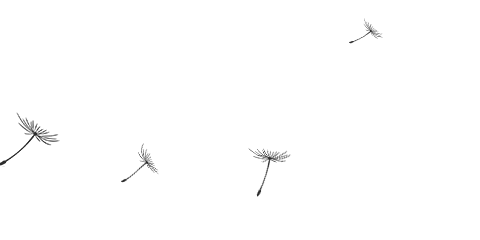
Jingchuan County Museum
jcxbwg
